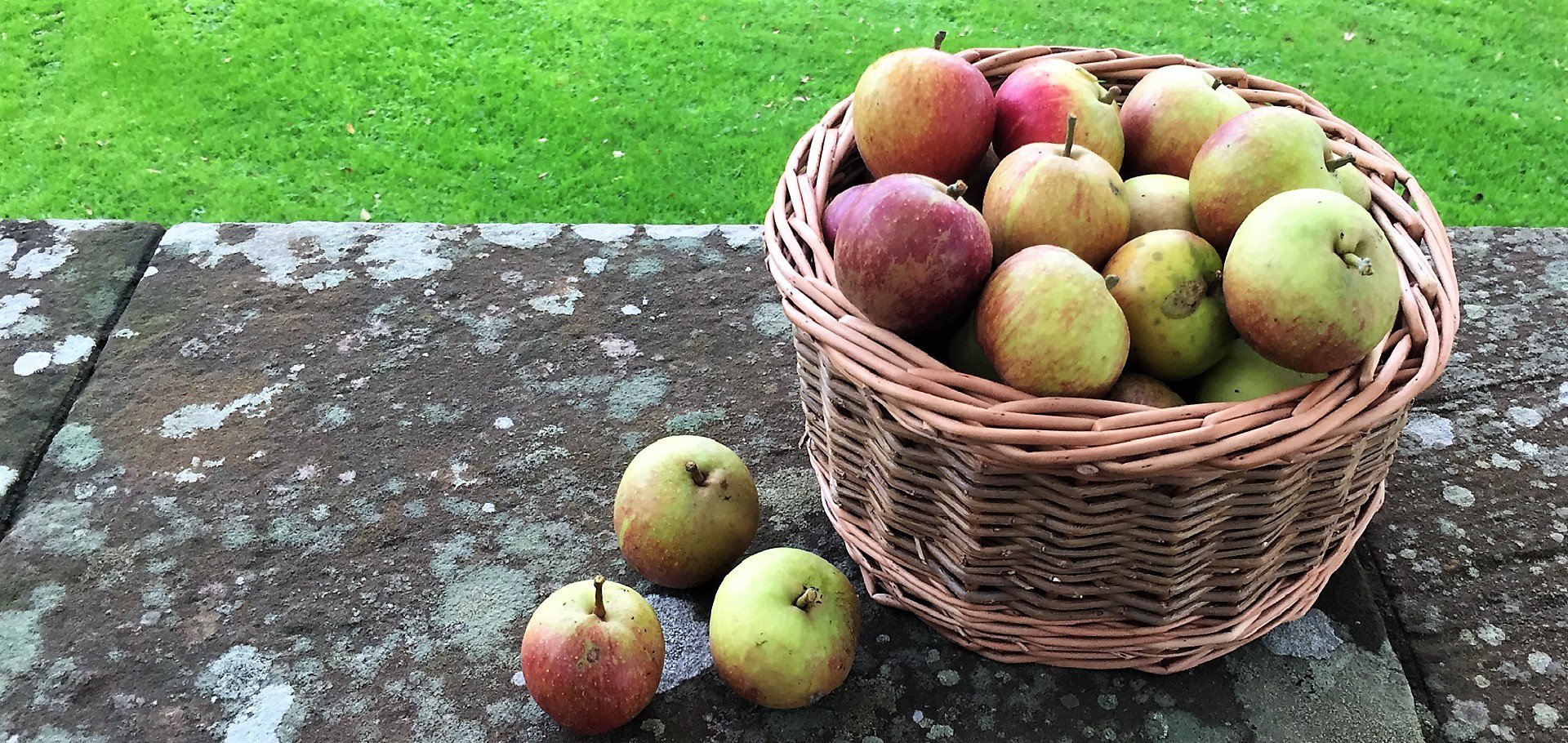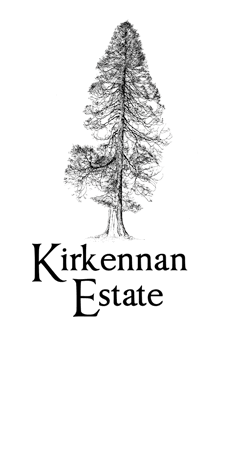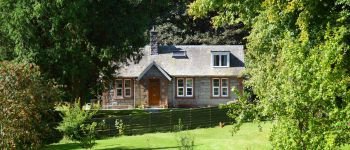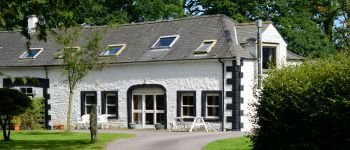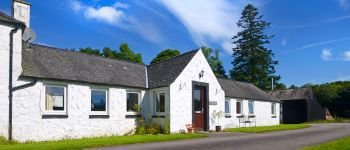Every winter, in the 6 years we have been at Kirkennan, we have been planting fruit trees. These are now starting to produce and as I harvest the apples it seems like a good time to take stock of what I know about apples and the range of varieties we have...
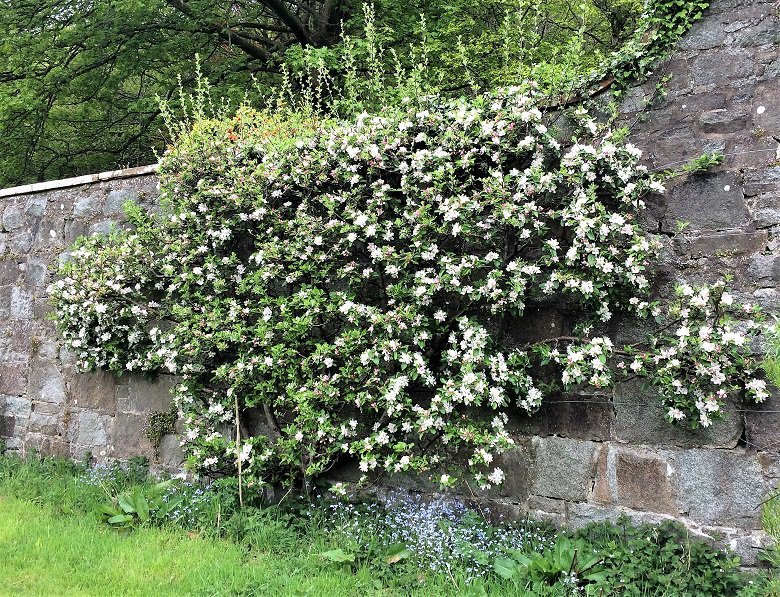
Apple History
I have always assumed that domestic apples (Malus domestica) were developed by selective breeding from the native wild Crab Apple (Malus sylvestris). Having just read the fascinating book The Garden Jungle or Gardening to Save the Planet by Dave Goulson I learn that in fact our cultivated apple is largely descended from wild apples (Malus sieversii) from the border between Kazakhstan and China. Here some wild apple forests still exist with their seeds spread by bears, though they were largely lost in the second half of the twentieth Century when Khrushchev pushed for the clearance of wild land to increase cereal production.
Wild apples were first domesticated 4500 years ago and were introduced to the UK by the Romans. Over the millennia selective breeding from wild apples which vary greatly in size, shape colour and sweetness, including some cross breeding with the wild crab apple, has led to nearly 7500 apple varieties worldwide. However you are unlikely to come across more than a fraction of these in the shops as commercial apple growing tends to focus on just a few.
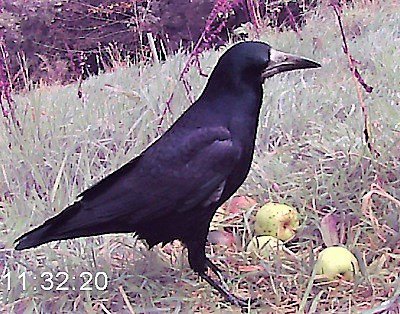
Apples and wildlife
An old British apple orchard tended organically is likely to be teeming with life. More than 2000 arthropod species (insects plus spiders, mites, millipedes etc) have been found in studies. About a quarter of these are potential pests, another quarter are natural enemies of these pests with the remainder having no major effect. These arthropods form the base of a complex food web which also supports birds, bats, shrews, mice, hedgehogs etc.
Other birds feast on the tree itself: bullfinches can eat the buds in spring and thrushes and blackbirds will peck at fallen fruit in autumn. Large, old, bushy trees can form useful nesting sites for birds such as blackbirds.
We pick and use the majority of our apples at Kirkennan but do allow some to rot on the ground to provide food for wildlife – particularly from the trees in Jock’s wood and along the bank of the Urr water.
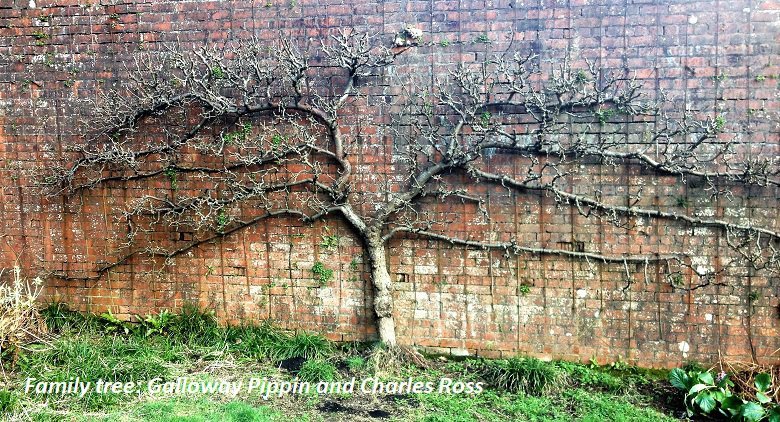
Apple propagation and fertilization
Apples will not grow true from seeds so all named varieties are grown vegetatively by taking material from a parent tree. Commercially this is done by grafting or budding from the parent on to rootstock which will produce a tree of known size. It is also possible to propagate by rooting a cutting but this will form a tree of full size.
Some apples are self-fertile (i.e. they can fertilize themselves) but most need to be pollinated by a nearby apple tree of a different variety that flowers at the same time; a few such as Bramley’s Seedling are ineffective at pollinating other trees meaning three varieties of trees are needed to ensure effective pollination (these trees are called triploids). A different tree of the same variety will not work as the vegetative propagation means that essentially they are the same tree. It is also possible to graft more than one variety onto a rootstock - useful if you don’t have room for more than one tree. We have one of these 'family trees' at Kirkennan trained against the West facing wall near the greenhouse. This has Galloway Pippin to the left and Charles Ross to the right – these cultivars were selected to grow at similar rates to keep the tree looking balanced.
Commercial cultivation
Modern commercial varieties have generally been bred to keep well and be juicy, sweet and crisp. However some show little resistance to disease and pests as it was assumed that they would be grown using an array of chemicals – older varieties may be tougher.
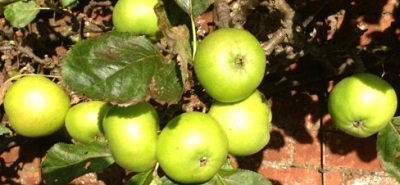
It is not easy to find data on chemical use in commercial apple orchards. The best information that Dave Goulson could find is from 2004 where the average UK Cox apple orchard received a horrifying 13 fungicide sprays, 5 plant growth regulator sprays, 5 sprays of insecticide, 2 herbicide sprays and one spray of urea. Many of these contained multiple chemicals with 42 different ones being used in all. Goulson concludes that the ‘rosy, shiny apples on the super-market shelf got there as a result of environmental carnage’ – just one of the ways that commercial agriculture contributes to the decline in UK wildlife shown in the latest annual report on the State of Nature in the UK. Finding this out is certainly enough to put me off wanting to buy a non-organic apple again.
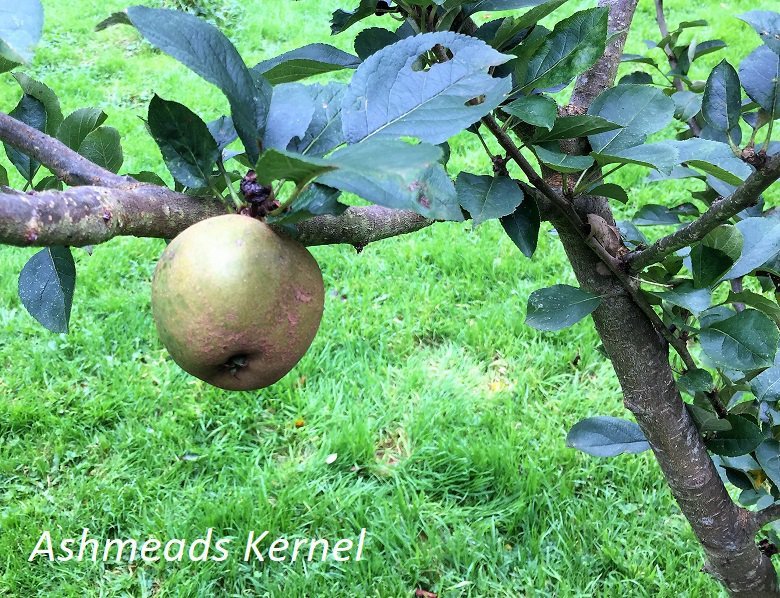
Growing apples organically
We grow our apples (and all our other crops) organically. Each apple tree gets a generous amount of home produced compost in Spring and will have biochar and woodash (for potassium) spread when it is available. They also benefit from chickens pecking around the base and fertilizing the soil with their droppings.
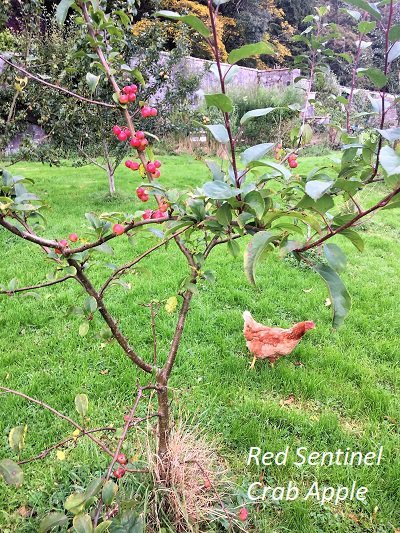
Having just a small orchard with a range of different fruits and varieties we tend not to suffer from any particular pest though we do try to encourage beneficial arthropods such as earwigs. Canker, a fungus disease, is a problem in the local area as it tends to be worse in heavy wet clay or acidic soils – exactly what we have. We try to cut out all infected sections taking care to remove and burn the infected wood and to sterilise the secateurs between trees and whenever they come in contact with a canker to avoid cross infection. For new trees we select varieties that are known to be resistant to canker. The wood ash and chicken droppings also help to reduce soil acidity.
Apples rely on insect pollination and good pollination can prevent deformed fruits, increase their sweetness and mineral content and improve the keeping properties. In the UK around two-thirds of apple pollination is done by solitary bees; mainly mason and mining bees. These tend to forage close to home so effective pollination relies on suitable habitat for these bees in the local vicinity. Mason bees nest in cracks or cavities in wood, hollow stems or walls – so the wall of the walled garden provides lots of opportunities for them. Mining bees nest in holes in the ground.
Apples at Kirkennan
When we came to Kirkennan in 2013 there were 6 mature apple trees trained against the walls of the walled garden. Two Bramley’s Seedling trees were very productive as was the family apple tree that Jock had grafted in his youth with Galloway Pippin and Charles Ross. The other three apples; two Cox’s and a James Grieve did not produce at all for the first couple of years but since then have been doing much better – I am not sure if this is down to pruning, weather or a healthy dose of woodash (the potassium is needed for producing fruit and flowers).
Each year we add a few fruit trees to our orchard and now have a range of different apples. These have been selected to ensure good cross-pollination, a variety of fruit types (desert, cooking, juicing), harvesting at different times and disease resistance. These new trees are now beginning to bear fruit so if anyone staying in our holiday cottages during the apple season is interested in doing a taste test please just ask. You can find the full inventory of apple trees currently at Kirkennan below.
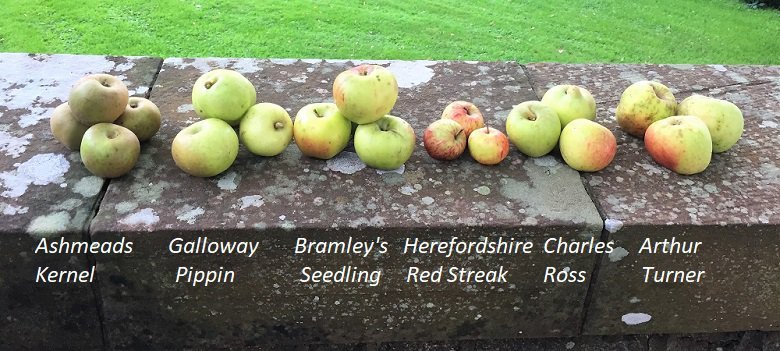
Kirkennan Apple Tree Inventory:
Arthur Turner (end Sept)
An early season cooking apple with attractive blossom - great for apple sauce. Raised by Mr Charles Turner of Slough in the early 1900's as Turner's Prolific, renamed Arthur Turner and re-introduced in 1915 possibly in memory of the breeder's son who died in the field in Flanders in 1915. Doesn't keep.
Ashmeads Kernel (Oct-Nov)
An old russeted apple originating in the 1700s. The variety has a distinctive flavour said to be ‘intense sweet-sharp’ which is quite different from most other varieties. Good for eating, salads, cooking and juicing it stores well. It is Hugh Fearnley-Whittingstall’s favourite apple who writes: ‘the bite is a nutty snap, exploding with champagne-sherbet juice infused with a lingering scent of orange blossom. Stick me in Pseuds Corner if you like, but try one and you'll see I'm right.’ Keeps well.
Belle de Boskoop (not yet fruiting)
Introduced in 1856 in the Netherlands this is a dual-purpose apple, suitable for both eating and cooking when it keeps its shape making it suitable for apple flans. It is quite sharp and works well in a savoury salad. Stores well.
Braeburn (late Oct)
These apples are considered unsuitable to grow organically in the local area as it really needs a warmer climate. I had one that came in a job lot and so put it against a south facing wall where it is bearing a few fruit for the first time which is not yet ripe. It is one of the most widely grown commercial apples but its flavour can vary a lot.
Bramley’s Seedling (Sept – Oct)
This is considered to be one of the best culinary apples for flavour. It has a high level of acidity and cooks to a puree. It stores well. 2019 is the 210th anniversary of the discovery of Bramley's Seedling which was planted as a pip by Mary Ann Brailsford. It is named after a subsequent owner of the house, a Mr Bramley, who allowed a local nurseryman to propagate it on condition that it was called after him.
Charles Ross (Oct-Nov)
Charles Ross is a late Victorian apple developed from a cross between Cox’s Orange Pippin and Peasegood Nonsuch resulting in an apple that looks like a large Cox. It is a dual purpose apple and also good for juicing.
Cox’s Orange Pippin (late Sept/mid Oct)
Probably my favourite eating apple this was discovered in the 19th Century as a chance seedling. It is sharp with a wide range of subtle flavours. It prefers a relatively cool maritime climate to develop the best flavour but is unfortunately prone to diseases. It is said to be unsuitable for organic cultivation but seems to do OK at Kirkennan where we have two trees planted against South facing walls. Keeps 1-2 months.
Crawley Beauty (not yet fruiting)
An old dual purpose apple found in a cottage garden in Sussex around 1870. It cooks to a puree with a delicate apple flavour - but can be eaten fresh after storing. Good disease resistance and tolerates a wide range of soil types.
Discovery (late Aug-early Sept)
An early season apple that is best allowed to mature on the tree and then eaten very fresh. Also good for juicing. Lacks the depth of flavour of later season apples.
Galloway Pippin (early Oct)
A yellow/green apple originating from near Wigtown. It was brought to notice in 1871 but is thought to be much older. It can be eaten as a desert apple but is better used early for cooking where it keeps its shape. Keeps 1-2 months.
Hereford Red Streak (late Sept-mid Oct)
An old English cider variety producing a bittersharp juice that was grown commercially in the 18th century but then went out of favour. Our tree planted in 2016 is already quite prolific and makes good apple juice when mixed with other apples.
James Grieve (Oct-Nov)
A dual-purpose apple variety, raised in Edinburgh and first recorded in 1893. When first picked it is acidic and refreshing and if too sharp for eating it can be used for cooking (it keeps its shape when cooked) or juicing. After a few weeks the flavour sweetens and becomes quite mild, and it is then said to be a good apple to eat in slices with cheese. The flesh becomes soft on keeping, like a firm pear, but will become too soft if kept too long.
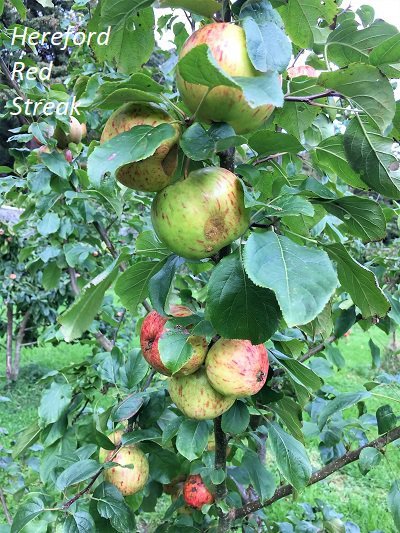
Kidds Orange Red (yet to fruit)
Developed from Cox’s Orange Pippin in the 20th Century this is a similar eating apple but redder and sweeter, but still said to have a great flavour. Ours is yet to crop but according to the website Orange Pippin The skin is thin and the flesh is a light yellow-cream colour, and quite dense. It bites cleanly, but is firm rather than crunchy. The flavour is sweet and honeyed, noticeably sweeter than Cox's Orange Pippin. The aromatic complexity of its parent is still there, but rich sweetness is the predominant impression. Like many "English" style apples it is also pleasantly chewy, and each bite seems to release yet more juice and flavour. It's in some ways reminiscent of a good French dessert wine - sweet, but with a good kick to it. I cant wait to try it!
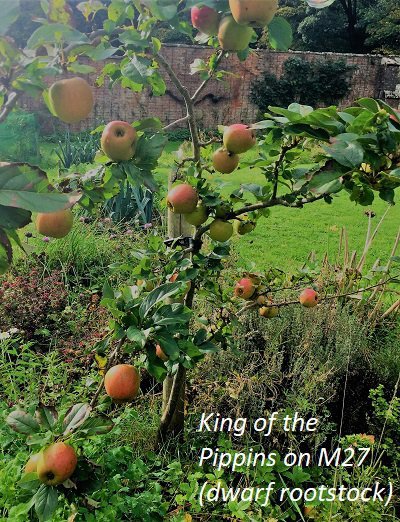
King of the Pippin’s (early Oct)
Another dual purpose apple which originated in France in 1770 under the lovely name ‘Reine des Reinettes’. It is a sharp, firm, juicy apple which sweetens in storage. It keeps its shape in cooking and brings ‘an authentic old-fashioned flavour’. It produces a sweet-sharp juice.
Laxton Superb (yet to fruit)
From Bedfordshire in 1897 this is another sweet desert cox style apple. It is firm rather than crisp without a lot of juice but with an interesting flavour. Try eating it in slices rather than biting into it. Keeps quite well.
Peasgood Nonesuch (Oct)
Jock was so enthusiastic about this cooking apple which used to grow at Kirkennan that I had to give it a try. It produces large pale yellow-green fruit, deepening to orange-yellow with short stripes of bright red and some russet patches. Good acid-sweet flavour, cooks to a froth and said to be particularly good for baked apple.
Russet
I am not sure what kind of Russet we have as I was given a scion which I grafted. It produced one apple of good flavour last year.
Worcester Pearmain (Sept)
An early season apple, originating from Worcester in 1873. It’s said to have a ‘strawberry flavour’ which is best if left on the tree as long as possible. Does not store well.
About Kirkennan
Kirkennan is a compact Scottish Estate of 74 acres. We moved here in 2013 and have been slowly developing the orchard and other fruit and vegetables as we have time and energy. We welcome apple or nature enthusiasts to our three holiday cottages - details below.
The Lodge
The Lodge holiday cottage sleeps 5&2 and welcomes up to 3 dogs. It sits within a large enclosed garden overlooking Kirkennan's developing orchard.
The Mews
The Mews holiday cottage sleeps 4&1 and welcomes up to 3 dogs. It is located in the converted stable block and is near to our 14 acre riverside woodland.
Woodsedge Cottage
Woodsedge cottage is level access throughout and sleeps 5, also taking up to 3 dogs. It has a wetroom and enclosed garden and overlooks fields.
